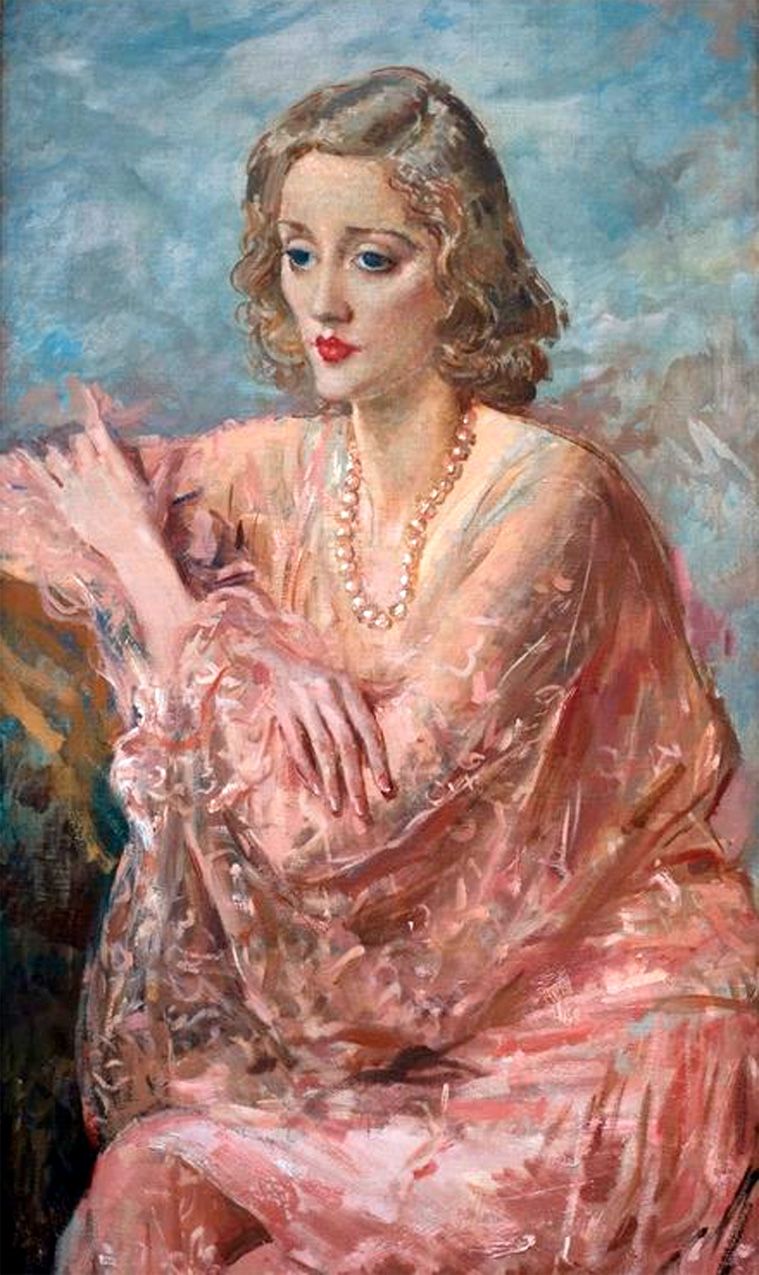
I first saw her at the National Portrait Gallery in Washington, D.C., having a few minutes to spare before scurrying off to a panel at a literary conference, my notebook still tucked between stiff fingers nicked by the cold. The chill hung onto my exposed knuckles through the long halls and wary high ceilings, and as I browsed figures painted stiff and presidential, others twisted pantheonic in contrapposto, I kept wandering, clattering as loose change. I drifted past the marble and cast bronze, meandered through both Davinci and Harlem’s Renaissance, and ascended stairs partially to test the property that heat rises, partially to seek more illustrations flaunting impasto. I found myself in a ballroom, with china laid out dainty to host the night’s guests, and before being shooed out, I stole a glimpse of her. I wasn’t looking for her, but she found me regardless.
I imagined Tallulah Bankhead would be the kind of sepia-cast vixen to blow cigarette smoke in your face, and would be a charming, albeit sloppy, alcoholic. I imagined her slipping on her driving gloves and proposing an impromptu picnic, during which we might discuss the gnarled roots of her Dixie-Aristocrat familial dynasty, and I would predictably spill sparkling cider on her checkered blanket. She would forgive me, as a proper Southern Belle, but would still tease me about it on the ride home, her scarf whipping wild as she went 20 over the speed limit.
Legend has it she once drank champagne from her own shoe at the Ritz in London, and distressed many of her co-stars with her antics, including Lucille Ball. She was exactly my type.
I had fallen in love in one way or another with all of them. It is true, that in our nation’s capital I stumbled upon my masterpiece, but I had also met her between breaks in meter, had heard her stitching backseam between backbeat, with all that voice. I had felt a funeral in my brain with Emily Dickinson, humored a Blue Moon as cheese with Lady Day. And now, Tallulah.
It was easy to fall for them, to crush, the way I did with occasional profiles softened by peach fuzz through car windows, whose faces would light up for just a moment with a flush of raspberry at a stoplight in dusk. It was easy to fall for the muses, like Davinci fell for Mona Lisa, with their Fibonacci proportions carved by their own hands. As long as I had the blueprints to chisel our own romance from their history, as it had been suggested, I could collect them.
But how could I separate the male gaze from my own fancy, to construct them as I knew them, without memorializing them to ruin? I had little navigation, and less honesty with myself.
When I turned to traditional outlets of storytelling, I found slumber party tourism, and the occasional peck over a dare followed by a rupture of giggles. The canon of romantic tales was cemented exclusively in the collection of damsels and their princes. While my collection of girls was flat and scarcely televised due to the technological limits of their epoch, they were heroines in their own right, and I could always draft up ways we would meet, whether bumping into one another at a speakeasy or in between classes at Amherst Academy.
I had collected them, but I knew they were not mine. I could not configure them in the shape of ornaments, using them to embellish my musings as figureheads. I didn’t want a house of dolls, but they are still tucked into my memory, in case of a stoplight, and a glance. I memorialize those who gave me a face to put to a feeling, before I could admit I liked girls beyond the legends of them.
So cheers to my first love, Tallulah, and to all the others who were cloistered to their quarters, or too golden for their age. May your oil paint luster stay evergreen.
Hanna Andrews is a freshman in Columbia College from Southern California. She enjoys long walks on the beach and giving ‘em the ole razzle-dazzle.
